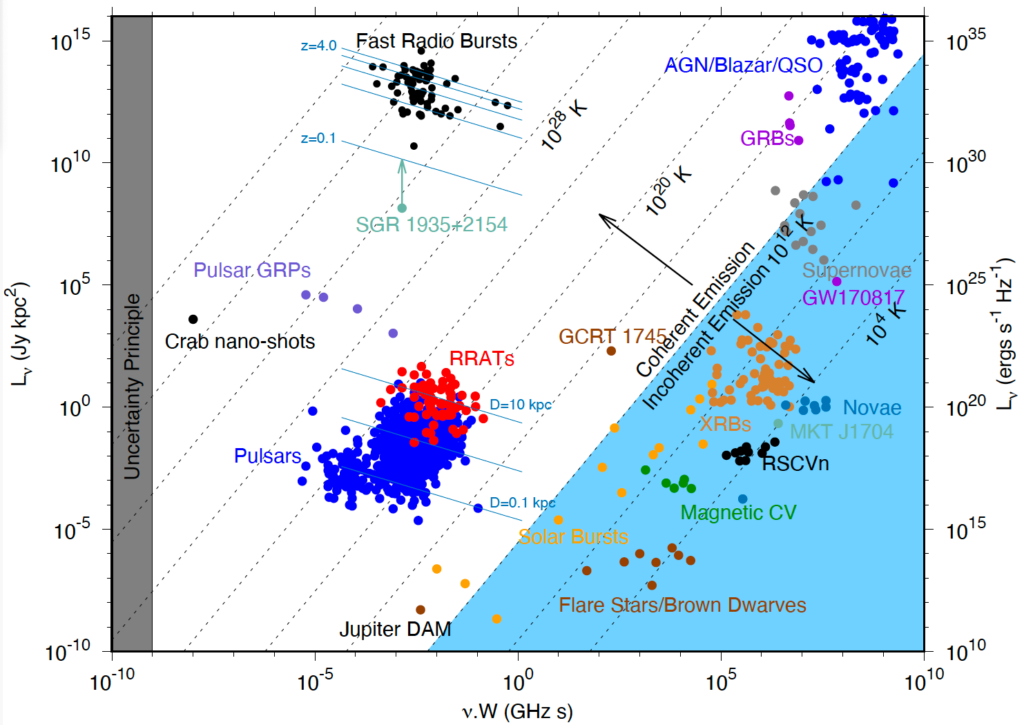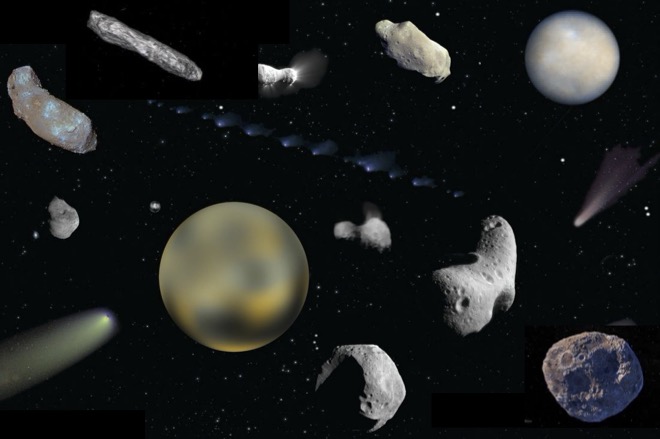Astrophysical Research Challenge 2:
Slow-motion astronomy – following rapid events in the real-time dynamic Universe.

vertical axis versus the product of observing frequency and timescale on the horizontal axis (adapted from Keane, 2018, Nature Astronomy). Known radio sources, distinguishing coherent from incoherent emissions, are displayed. The empty space indicates the possibility of additional, yet unknown source populations. Similar diagrams can be constructed for non-radio emission.
The dynamical evolution of our Universe is critically influenced by rapid, often highly energetic, events. Frequently, these events are associated with the birth and death stages of stellar life. These phenomena can sometimes be observed in real-time and in great detail. However, the statistical samples of such events are often too limited to be fully understood within a broader astrophysical context (ARC1 and ARC3). More observations are needed to characterise the diversity of these events, as large unexplored regions of the parameter space may harbour entirely new rapid phenomena. Slow-motion astronomy in the era of Big-Data-Astrophysics holds great potential for discovering these phenomena. Sensitive, wide-field, high-time-resolution surveys are making previously inaccessible regions of parameter space available. This involves designing search strategies for high-volume data without knowing the exact signatures of the target events. To fully grasp the impact of rapid events, which can be bifurcation points for the further development of astrophysical objects, we must systematically study and understand the relevant physical processes and their connections across different timescales.

